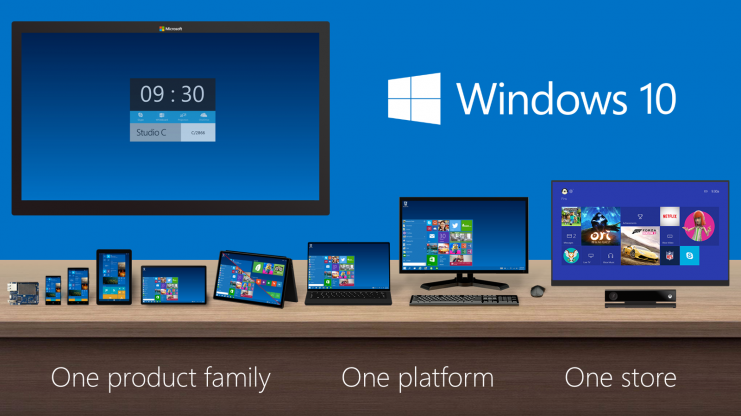
Yesterday, Microsoft announced Windows 10, a strange confluence of touch-friendly Windows 8 and the mouse-and-keyboard focus of Windows 7.
The company said that Windows 10 would be available in late 2015, but is making a Technical Preview available to some users today.
Windows 10 not only brings back the vaulted Start Menu, but adds a number of multitasking-specific improvements, like an Expose-like look at open apps across desktops, that should improve productivity for desktop users.
Continuum is Microsoft’s solution to the disjointed experience Windows 8 users faced when transitioning between desktop and tablet interfaces. With the proliferation of hybrid devices like the Surface and popular Asus Transformer Book T100, many Windows 8 and 8.1 users have found it awkward to juggle fullscreen “Metro” apps and traditional Windows 7-style apps.
The Technical Preview is x86-only, so it won’t work on Windows RT-based devices, and Microsoft doesn’t recommend installing it on production hardware. The 32-bit version is just over 3GB and the 64-bit download comes in around 4.1GB, and both expire on April 15, 2015.
Microsoft wrote that “Windows 10 represents the first step of a whole new generation of Windows. [It] will run across an incredibly broad set of devices – from the Internet of Things, to servers in enterprise datacenters worldwide. Some of these devices have 4 inch screens – some have 80 inch screens – and some don’t have screens at all.
We’re not talking about one UI to rule them all – we’re talking about one product family, with a tailored experience for each device.
And across this breadth of devices, we are delivering one application platform for our developers. Whether you’re building a game or a line of business application, there will be one way to write a universal app that targets the entire family. There will be one store, one way for applications to be discovered, purchased and updated across all of these devices.”
In other words, Microsoft wants to incentivize developers to create a single app that will work across many screen sizes, similar to the way Android’s Material Design adapts to resolutions and densities. Universal apps will now run in a window on desktop, similar to legacy software, hopefully overcoming that disjointed feeling from Windows 8.
Microsoft didn’t talk a lot about how Windows 10 will affect Windows Phone, but hinted that it will eventually transition to a single codebase for desktop, tablet and phone apps.
[source]Microsoft[/source]


